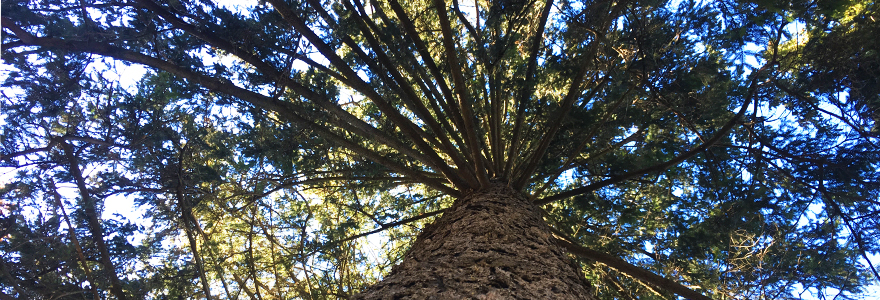Consuming less CO2 than ever before: the plight of the boreal forest

Rapidly rising temperatures and atmospheric carbon dioxide (CO2) levels are the oft-spoken results of nearly a century’s worth of human industry across the globe. And while we may know about the negative effects of these phenomena on arctic ice melting or drought severity, what about plants? Don’t plants like warmth, don’t they consume CO2? It stands to reason that higher temperatures and CO2 could benefit plants and forests. Investigating these questions is Danielle Way and her research group in the Department of Biology at Western University. “We grow a variety of plants in a series of climate-controlled greenhouses where we can simulate the effects of climate change predicted to occur over the next century,” explains Way.
Much of the Way group’s research focuses on the tree species that dominate Canada’s vast boreal forest, like black spruce and poplar. It is difficult to envision the size of the Canadian boreal forest: 2.7 million square kilometres, more than a quarter of our entire country. “There are only a few tree species there, but they dominate our landmass,” explains Way. While the trees are well equipped to withstand the harsh northern winters, the very same traits that give them an advantage in the cold make them poor candidates to survive in a warming world. “What we’re finding is that climate change effects are causing high mortality in many boreal tree species, and those that survive actually consume less CO2,” says Way.
These findings are painting a picture quite different than the long-held assumption that climate change will benefit our northern trees. In fact, if Canada’s largest forest removes progressively less CO2 from the atmosphere, global greenhouse gas accumulation could occur much faster than currently predicted. “Without a doubt, the conifers of the boreal forest form an important part of our shared Canadian identity,” says Way, “but they may also be more vulnerable to massive die-offs from climate change than broad-leaved species like poplar and birch.” And as more southern tree species, like maple, are predicted to migrate northwards, they will find the harsh environment, low light conditions, and thin soils of the boreal forest hostile to their presence. This means that the void left behind by retreating boreal species will not be easily replaced in a warmer world.
In addition to boreal trees, Way and her colleagues also study climate effects on key agricultural plants, like wheat. “Climate effects present a number of challenges with wheat, such as a reduced yield and a lower seed quality,” she explains. “In fact, for every one degree Celsius in warming, wheat yield decreases about 5 percent.” These findings have tremendous implications for our understanding of global food security in a warming world. The Way group is now investigating which traits make certain species resilient to climate change, such as the ability to maintain strong interactions with pollinators. “Knowing more about these traits will give the agricultural sector an edge in developing secure crops for the future.

